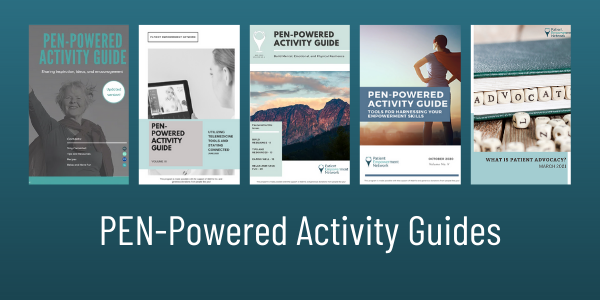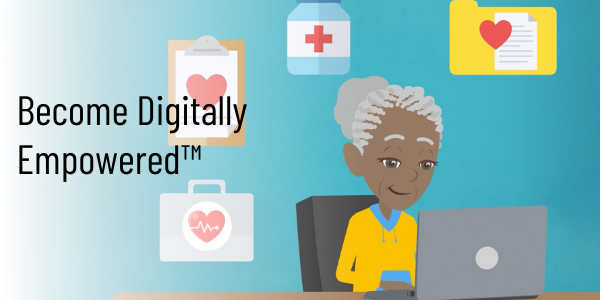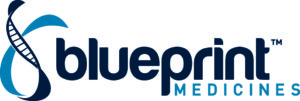Armia’s Story
Armia’s Story | Renal Medullary Carcinoma from Patient Empowerment Network on Vimeo.
Renal medullary carcinoma (RMC) patient Armia Austin was diagnosed at age 21. Watch as she shares details about her diagnosis and treatment journey, advice to others for sickle cell trait testing, and hopes and goals for the future.
Transcript:
Armia Austin:
I was diagnosed with RMC back in May of 2020. I was 21 years old when I was diagnosed and I was at college when I started getting symptoms. The timing couldn’t have been better because I had symptoms and then it was spring break and then the pandemic hit. So, I was able to come home, be with my family, and be able to attend all these doctors’ visits, ’cause I had to get CT scans, MRI all that kind of stuff. So, the timing was good because I was able to come home from college and get the testing that I needed to see exactly what was going on. Finding a doctor was very simple, because I went through my primary care doctor, and then I was referred to a doctor for my urinary tract, so I saw someone to get a CT scan on my bladder and all that stuff, and then they saw a tumor on my right kidney, so they didn’t know what it was, and they didn’t care if it was cancerous or not, I’d see a neurologist for that, so they didn’t care if it was cancerous or not, they just wanted me to remove the kidney all together as soon as possible because of the size of my tumor. So, in May, I got the kidney removed, my right kidney removed, and then I followed up with the doctor who removed my kidney, my urologist, and they noticed that it was called renal medullary carcinoma, that was the type of tumor it was, and they followed up with an oncologist that I was able to meet with immediately because they wanted me to be watched regardless if it has spread or not.
So, my treatment path was, it was a pretty easy transition because I was able to have a urologist set up right away. So it was actually, I’d say after three months of not having or, of getting my right kidney removed, I was set up for a CT scan three months, fast forward three months from the surgery, but I started getting symptoms probably three weeks after my kidney surgery. I had a very rough chest pain, it was very heavy on my chest, I had issues breathing, so I… fast forward, I got another CT scan and there was fluid, they were fluid all over my chest in the CT, it filled my entire right lung, so it went from my right kidney all the way up to my right lung and it filled the entire lung, so I was breathing off of one lung at the time, and I would have anxiety attacks, panic attacks, everything because it was so hard to breathe on its own, so it would freak me out, but then I was able to get tapped in my back, so they would numb my back and then drain the fluid so it would release the tension in my lung area, but then I was able to get on chemotherapy by August, I had an event where my friends came over and they all shaved their heads for me, so that was really nice.
So talking to friends and family was definitely a huge benefit for me because people were always praying, leaving me messages, checking in on me, making sure I was okay, and when you are a cancer patient, it’s really hard to understand or wrap your head around the fact that you actually are
sick in a sense of like it’s very different from anything, any kind of sickness you have encountered before, so it was hard, but definitely talking to friends and family made the difference. My advice to others is definitely get tested for the sickle cell trait as soon as possible. I think that is the most important thing because that’s where it all starts. So even if you have the sickle cell trait, it doesn’t necessarily mean that you will be prone to this cancer, but it’s definitely good to get the test so that if it were to come up in the future, you would know how to handle it sooner.
So, my hope for the future, I’ve been on chemo for about six months now, and it’s been going very well for me. I’m still a college student, I never took time off from classes, so I never took not even a summer off when I was diagnosed, I was still in summer classes, finished fall semester, and now I’m in Spring, so I will be scheduled to graduate this May, May of 21, and then eventually I plan to go to medical school and become a doctor myself. Because I love the idea of helping other people who are unable to help themselves, and I feel like if we have more leaders in the healthcare field who can relate to a perspective, then we’ll have a lot more better doctors in the world because of the relationship and the perspective of being on the opposite end of the spectrum.
Never take life for granted because you never know what will come out of it. And I can say that from my experience, cancer isn’t what I planned for myself. I never thought I would be diagnosed at 21 years old, but it really shaped me as an individual as far as how important and how crucial life is, and how important is to stay on top of your health and you know just life is very important and whoever is going through something, just be grateful that you have the chance to get the help you need and that it’s not too late to get help from any type of medical professional because everyone’s life is important, everyone’s life is crucial.
And renal medullary carcinoma should not go unnoticed because it’s a crazy and it’s a crazy cancer, but with more research and more help and people who are more informed because of the cancer, I feel like we’ll be able to stop a lot of cases in the future.






